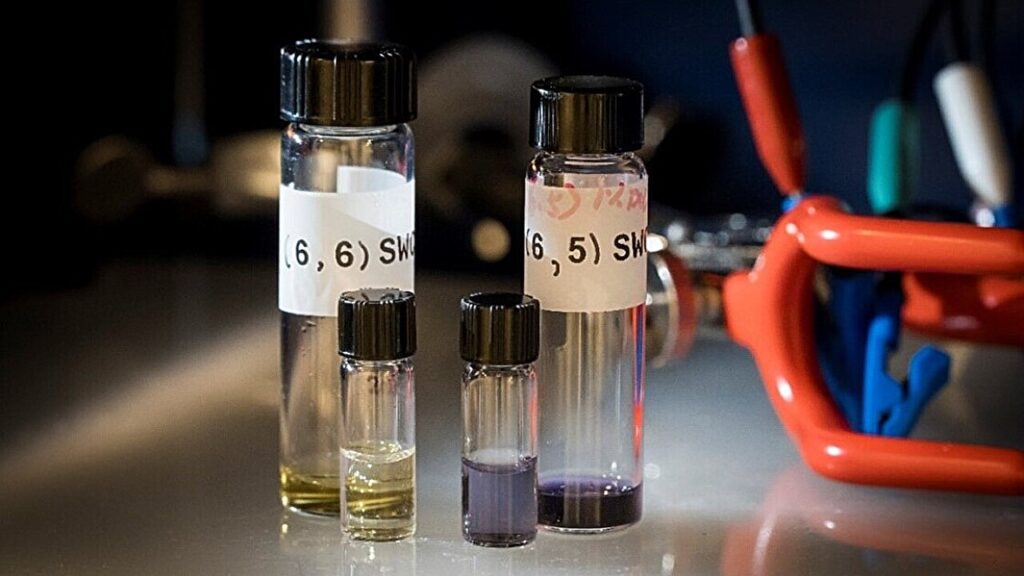Researchers at the University of Turku, Finland, have succeeded in producing sensors from single-wall carbon nanotubes that could enable major advances in health care, such as continuous health monitoring. Single-wall carbon nanotubes are nanomaterial consisting of a single atomic layer of graphene.
A long-standing challenge in developing the material has been that the nanotube manufacturing process produces a mix of conductive and semi-conductive nanotubes which differ in their chirality, i.e., in the way the graphene sheet is rolled to form the cylindrical structure of the nanotube. The electrical and chemical properties of nanotubes are largely dependent on their chirality.
Han Li, Collegium Researcher in materials engineering at the University of Turku, has developed methods to separate nanotubes with different chirality. In the current study, published in Physical Chemistry Chemical Physics, the researchers succeeded in distinguishing between two carbon nanotubes with very similar chirality and identifying their typical electrochemical properties.
“Although the difference in the chirality of the nanotubes is very slight, their properties are very different,” says Doctoral Researcher Ju-Yeon Seo.
Accuracy and sensitivity for sensors
By purifying and separating the carbon nanotubes, the researchers were able to test their differences as sensor materials.
Nanotubes are often used to make hybrid sensors by combining them with another surfactant, but in this study the sensor was made completely from nanotubes.
In addition, the researchers achieved precise control over the concentration of nanotubes so that the different chiralities could be compared.
Among other things, the researchers found that one type of nanotube (6.5) appeared to be more efficient than the other (6.6) in adsorbing dopamine. Adsorption refers to the ability of a material to bind atoms or molecules to its surface. The adsorption capacity of the material is particularly important when the concentrations of the test substances are very low.
“The result is significant because by being able to precisely control the properties of carbon nanotubes we can fine-tune the ability of the sensor material to detect changes in specific substances,” says Doctoral Researcher Seo.
Current sensors enable, for example, the measurement of blood glucose levels in the body. At the University of Turku, the researchers’ aim is to develop more accurate and sensitive sensor materials that can be used to detect significantly lower concentrations.
“The molecules that we are interested in, such as female hormones, are present in the body in concentrations that are millions of times lower than glucose. In order to study hormone fluctuations, the accuracy of biosensors needs to be improved significantly,” says Associate Professor of Materials Engineering Emilia Peltola.
The recent results are the first demonstration that the electrochemical response of the sensor is affected by chirality. In further research, computational models could be used to find the best chirality for each molecule that is measured.
The Materials in Health Technology group at the University of Turku focuses on understanding the implant surfaces of different materials in biomedical applications. One of the main focus areas is developing sensor technologies for health care. The research group is developing sensor materials that are more sensitive and accurate than those currently available and which would preserve their functionality in a biological environment.


